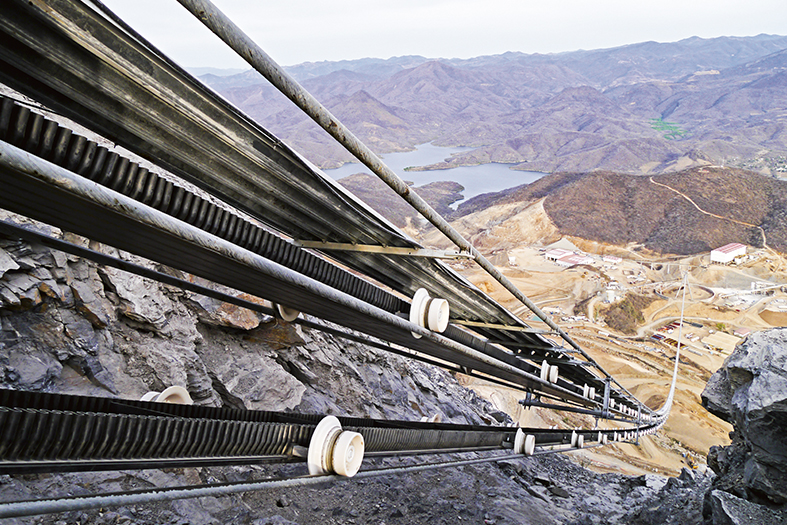Doppelmayr has turned its RopeCon® system on its head, designing a new vertical material transport concept for the underground mining space called the Vertical Shaft Conveyor.
Unveiling the concept at the AIMEX 2019 event in Sydney, Australia, the company said the Vertical Shaft Conveyor “opens up new material transport options for underground mining and gives the chance to reduce the haul truck fleet and exhaust emissions”.
Doppelmayr has become synonymous with its RopeCon installations at global mine sites across the globe. These innovative continuous conveyors (pictured) can be adapted to uneven terrain, transporting material on a flat belt with corrugated side walls, elevated off the ground on tower structures. Installations include the ELG gold complex in Mexico (Torex Gold) and Booysendal South in South Africa (Northam Platinum).
The Vertical Shaft Conveyor, meanwhile, comes with a vertical lift capability of up to 750 m, a conveying capacity of 2,000 t/h, a maximum lump size of 150 mm and clear shaft diameter requirement of 3.5 m. The company pointed out these specifications are all dependent on the material specifications and operating conditions with, for example, a 700 m vertical lift application coming with a conveying capacity of 700 t/h.
System advantages the company stated included:
- No access to shaft required – neither for installation nor operation;
- Maintenance can be carried out in the terminals;
- Re-use of existing ventilation shaft is possible;
- Continuous material flow, and;
- Heat development is reduced with the main drive installed above ground.
The company says: “Maintenance is simple and cost effective, as all moving parts are mounted to the belt and will pass the terminals at regular intervals. Ropes and shaft are inspected by a camera system which is attached to the belt.”
Like a conventional conveyor, the system can be loaded by transfer conveyor or by an ore pass, with the material transported to the surface on a conveyor belt.
“This belt is equipped with side walls and cleats, forming pockets for the material,” Doppelmayr says. Above ground, the material is transferred to another conveyor, another RopeCon installation or discharged onto a stockpile.
The company puts the vertical lift capabilities down to, among other things, the belt being turned after discharge. This sees the entire belt tension deflected via on return drum, with the entire belt width can be used as a bearing surface.
Another reason for the lift capability is the wheel sets run on guiding rails at the loading terminal, which safely guide the belt into the shaft. Ropes in the shaft always guide the belt during operation.











